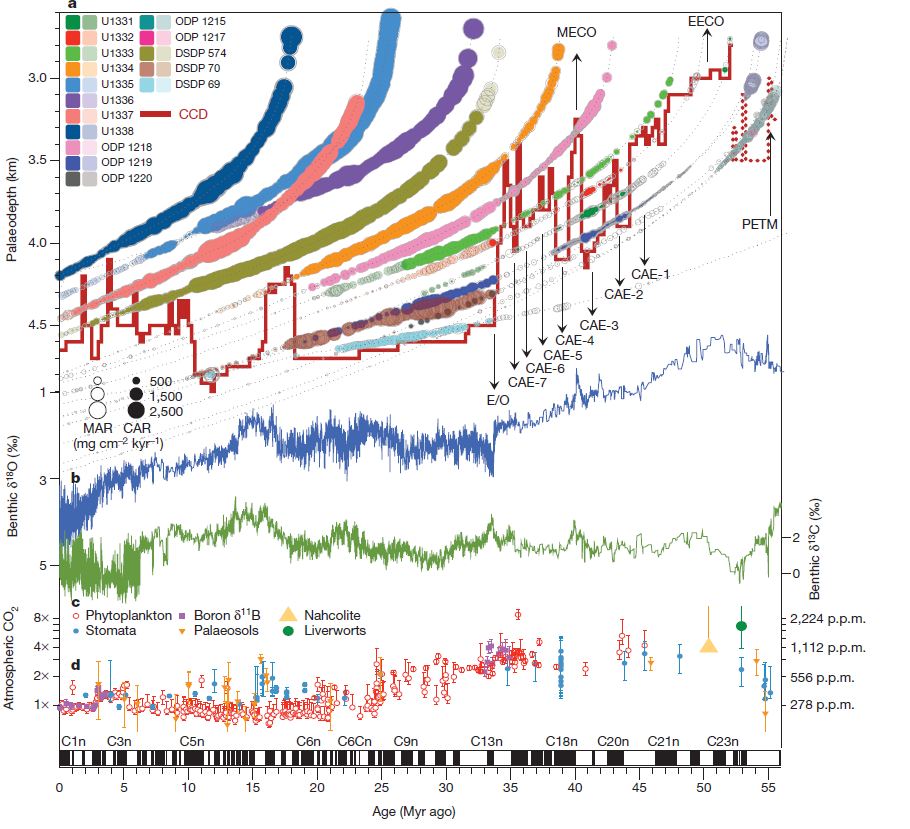Climate change stories from the abyss
A team of scientists, including University of Southampton scientists who are based at the National Oceanography Centre, have shed new light on the world’s history of climate change.
The Pacific Ocean has remained the largest of all oceans on the planet for many million years. It covers one third of the Earth’s surface and has a mean depth of 4.2 km. Its biologically productive equatorial regions play an important role particularly to the global carbon cycle and long-term climate development.
During a four-month expedition of the Integrated Ocean Drilling Programme (IODP) on board the US drilling vessel JOIDES Resolution an international team of more than 100 scientists and technicians recovered 6.3 kilometers of sediment cores from water depths between 4.3 and 5.1 km and drilled 6.3 km of sediment cores at eight locations.
The cores offered an excellent archive of Earth’s history and showed how global climate development during the past 55 million years is mirrored and influenced by geochemical processes deep within the ocean.
The findings are published in the latest edition of Nature.

- Figure: CCD and carbonate accumulation rate reconstruction compared with published benthic foraminiferal d18Oand d13C values and atmospheric CO2. a, Equatorial Pacific accumulation rate history as a function of geological age at the backtracked and unloaded palaeo-water depth, and using a palaeomagnetic polarity age scheme, plotted as black and white bars below the figure. Circle area is scaled by accumulation rate: carbonate accumulation rate (CAR; filled circles), total mass accumulation rate (MAR; open circles). Data are plotted with a lighter colour outside a63.5u band around the palaeo-equator.The position of the equatorial Pacific CCDis indicated by a solid red line (dashed red line marks reconstruction from off-equatorial sites).
Professor Heiko Pälike, of the University of Southampton and National Oceanography Centre, Southampton was co-chief scientist of the cruise and lead author of the Nature study.
He explains: “Nowadays we often discuss global warming induced by man-made carbon dioxide. However, on geological timescales of millions of years other processes determine the carbon cycle.”
Volcanoes are one major source of carbon dioxide input to the atmosphere. On the other hand the greenhouse gas is removed by weathering of rocks made up of carbonate.
“The overall balance of these processes is reflected in the deep ocean’s carbonate compensation depth, the CCD,” the MARUM scientist continues.
“This invisible surface is defined as the depth in the oceans at which the mineral calcite is dissolved. Hardly any biological remains made from carbonate below the CCD, for example chalk and microscopic plankton, are preserved. Instead the sediment that consists mostly of clay and plankton remains made from silica.
“The interesting point in our study is that the carbonate boundary is fluctuating over time. It shallows during periods of warm climate and normally deepens when ice age conditions prevail.”
In the study, Professor Pälike and co-workers demonstrate that in the equatorial Pacific the CCD was at 3.3 to 3.6km 55 million years ago. Between 52 and 47 million years ago, when very warm climate conditions prevailed, the CCD leveled up to 3 km. 34 million years ago, when the Earth slowly but steadily cooled and the first ice domes formed in Antarctica the CCD went down too. 10.5 million years ago it reached 4.8 km.
The cores drilled during the expedition strikingly demonstrate that the interplay of climate development and carbon cycle was not a one-way street at all.
Similar episodes were registered in the sediment cores for later parts of the Earth’s history. 18.5 million years ago the CCD moved upward about 600 metres – only to sink down to 4.7 km 2.5 million years later. Today, the Pacific carbonate compensation depth is at 4.5 km.
…………………………………..
Heiko Pälike, Mitchell W. Lyle, Hiroshi Nishi, Isabella Raffi, Andy Ridgwell et al.
A detailed reconstruction of the calcium carbonate compensation depth—at which calcium carbonate is dissolved—in the equatorial Pacific Ocean over the past 53 million years shows that it tracks ocean cooling, increasing as the ocean cools.
Nature 488,609–614(30 August 2012)doi:10.1038/nature11360
Links
Follow us on Twitter
Recent Posts
- In the News : What a three-million year fossil record tells us about climate sensitivity
- Past evidence confirms recent IPCC estimates of climate sensitivity
- Crucial new information about how the ice ages came about : PR & Podcast
- 2014 Sino-UK Coevolution of Life and the Planet Summer School
- Past and Future CO2 – Reconstructing atmospheric Carbon Dioxide




